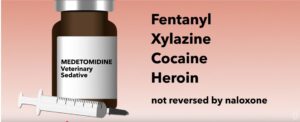On May 13, 2025, the Senate Law and Justice Committee of Pennsylvania voted to reject a proposal to legalize adult-use cannabis through a state-run retail model. The committee chairman, Senator Daniel Laughlin said House Bill 1200 was unworkable and doomed from the start. Laughlin said: “I have said repeatedly that a state-store model for adult-use cannabis will not pass the Senate.” He didn’t think moving House Bill 1200 forward was a serious attempt to legalize cannabis, but rather was political theatre. He thought there were more immediate and urgent issues that demanded attention.
Our medical marijuana program needs critical reforms. Hemp-derived THC products are being sold openly in gas stations and tobacco shops with no regulation, no testing and no age verification. And the continued reliance on the black market poses real risks to public safety.
Laughlin thought these issues could be addressed effectively through the creation of a Cannabis Control Board, currently proposed in Senate Bill 846. Laughlin thought this new regulatory body would bring oversight, consistency and accountability to Pennsylvania’s medical program and the expanding gray market of hemp-derived intoxicants. Senate Bill 846, legalizing adult recreational marijuana was referred to the Senate Law and Justice Committee on July 6, 2023. Senator Laughlin is the Prime Sponsor of Senate Bill 846 and as noted above, is the current chair of the Senate Law and Justice Committee. The Minority Chair of the committee, Wayne Fontana, is also a co-sponsor of Senate Bill 846.
Laughlin said he was committed to a cannabis bill that could pass the Senate, and thought Senate Bill 846 could pass the Senate, be signed into law and “benefit all Pennsylvanians.” I wonder to what extent Laughlin’s support for Senate Bill 846 and opposition to House Bill 1200 is because he sponsored the Senate bill.
This proposed bill would provide for adult use cannabis and regulate the personal use and possession of cannabis. It would establish a Cannabis Regulatory Control Board and provide for the powers and duties of that board. A Cannabis Business Fund would be established to provide for social and economic equity, to regulate cannabis business establishments, and advertising, marketing, packaging and labeling. It would establish the Cannabis Regulation Fund that would impose penalties, consolidate provisions related to medical marijuana. It would also transfer certain powers and duties of the Department of Health to the Cannabis Regulatory Control Board, “in driving after imbibing alcohol or utilizing drugs, further providing for driving under influence of alcohol or controlled substance and for authorized use not a defense; and making repeals.”
Laughlin’s concern about hemp-derived THC products is a legitimate issue that needs to be addressed, but it doesn’t require approving Senate Bill 846 to do so. Legislation could be passed that closes a loophole with the 2018 Farm Bill independent of approving adult use recreational marijuana. See, “The Loophole with Delta-8.”
The 2018 Farm Bill, also known as the Agriculture Improvement Act of 2018, said any part of the cannabis plant containing .3% or less of THC by dry weight would now be now defined as hemp. There is a process that converts the CBD in this “hemp” into delta-8 THC, which has a nearly identical chemical structure to delta-9-THC, the primary psychoactive ingredient in cannabis. Delta-8 is also psychoactive (50-75% the strength of delta-9 THC), producing a high similar to delta-9. The 2018 Farm Bill led to the market for delta-8-THC and the unregulated hemp-derived THC products being sold in gas stations.
I hope that Pennsylvania’s legislators do not presume that legalizing recreational marijuana in PA is inevitable; it is not. The alternatives are not simply whether House Bill 1200, Senate Bill 846, or some other bill should be signed into law to “benefit all Pennsylvanians.” There is growing evidence that legalization in other states hasn’t delivered on its promises; and that marijuana/cannabis is associated with both medical and psychiatric problems. Delaying the legalization of recreational cannabis in Pennsylvania will permit the scientific evidence opposing such action to be gathered and published, supporting the decision to “Continue to Keep Marijuana Medical in PA.”
Policy Has Outpaced Science
Staci Gruber, the director of the MIND (Marijuana Investigations for Neuroscientific Discovery) project has published a series of studies that confirmed the heavy use of marijuana (MJ) lowers the level of white matter in the corpus callosum region of the brain. In addition, using MJ before the age of 16 was also associated with lower levels of white matter. White matter affects learning and brain functions, modulating the distribution of action potentials and acts as a relay and coordinates communication between different brain regions. Not surprisingly, marijuana smokers were also found to have higher levels of impulsivity. Adolescent marijuana users are also vulnerable to reduction in grey matter, which is responsible for information processing and decision making.
In “Marijuana Use Predicts Cognitive Performance on Tasks of Executive Function,” Gruber and her team of researchers also found that marijuana smokers had poorer executive brain function than the control group. The difference seemed to be primarily the result of early onset of MJ use, before the age of 16. The differences remained even after the frequency and amounts of MJ used were controlled. Additionally, the early MJ use and the greater amounts of MJ used predicted poorer performance and errors on the Wisconsin Card Sorting Test (WCST), which is used to assess abstract thinking. “The WCST is also considered a measure of executive function because of its reported sensitivity to frontal lobe dysfunction.” Gruber and her team of researchers concluded that:
These findings underscore the impact of early onset of marijuana use on executive function impairment independent of increased frequency and magnitude of use. In addition, poorer performance on the WCST may serve as a neuropsychological marker for heavy marijuana users. These results highlight the need for additional research to identify predictors associated with early marijuana use, as exposure to marijuana during a period of developmental vulnerability may result in negative cognitive consequences.
In a 2017 interview with the Harvard Gazette, Gruber said the science on the health effects of marijuana were not settled yet. “When we think about legalization, we always like to have science inform policy. In this particular case, it seems to me that policy has outpaced science.” Although marijuana products are widely available, there were no studies on the direct impact of concentrates versus flower products on recreational or medical users. There is a “striking paucity” of research on the use of medical cannabis.
In general, what we’ve been able to glean from those research studies, along with the work of many colleagues across the country and across the world, is that overall, individuals who use marijuana look different from those who don’t in very specific cognitive domains. The most striking differences, however, are between those with early onset of use — people who use regularly prior to age 16 — versus those who use later. When you group marijuana users together — regardless of their age of onset — you may or may not see differences between them compared to control subjects. [But] once you separate the marijuana users into those with early versus late onset and then compare to controls, almost all the differences with regard to executive function are driven by the early onset group.
For further discussion of Staci Gruber’s research, see: “Listening to Marijuana Research,” and “Marijuana Policy Has Run Ahead of Science.” For additional research publications by Staci Gruber at MIND, see Marijuana Investigations for Neuroscientific Discovery.
Unrealistic Expectations with Legalization
Advocates described a fantasy about what would happen with marijuana legalization. It would lead to criminal justice reform, economic growth and public health benefits. Legal weed would eliminate the illegal market, generate tax revenue, and ensure a safe, well-regulated industry. But that isn’t what happened. A number of experts, politicians, and even former supporters of legalization, began questioning how states that legalized weed got it wrong. It seems legalization was promoted to the public with overly optimistic assumptions.
A Gallup poll in August of 2024 found that Americans’ views of the effects of marijuana have worsened since 2022. Slim majorities now say cannabis negatively impacts society as a whole (54%) and most of the people who use it (51%). In 2022, the public was evenly divided on marijuana’s effect on society and more likely to say the effect on users was positive (53%) rather than negative (45%). Demographically, whether participants were grouped by age, political party, frequency attending religious service, or having ever tried marijuana, all groups have become less likely to say marijuana has a positive effect on users. “Less than half of Americans in each of these groups now think that marijuana positively impacts society.” See, “Storm Warnings for Marijuana Legalization in Pa, Part 1.”
In “America’s Marijuana Legalization Experiment Is Going Up in Smoke,” Newsweek reported New York’s governor said legalization has been a disaster. The state has struggled to control the black market. In New York City alone, there are an estimated 8,000 unlicensed dispensaries, compared to 140 legal operations. The illegal shops severely undercut the legal market. “They sell the same products at a fraction of the price, with no oversight—evading taxes, flouting safety regulations and often offering high-potency THC products to minors.”
Cannabis, the Heart and Old Age
Although most Americans consider marijuana to be safe, new research has found cannabis use was associated with a higher risk of stroke and heart attack, including among younger adults. Published in the journal Heart, marijuana was associated with a twofold increased risk of death from cardiovascular disease. The analysis only shows a correlation and doesn’t indicate marijuana causes the effects. However, The New York Times noted it has been well-established that cannabis can raise blood pressure and heart rate and alter the heart’s rhythm. There are a number of studies demonstrating a link between the drug and cardiovascular issues.
Older adults and people with underlying conditions such as diabetes, high cholesterol or pre-existing heart issues are at greater risk. Their cardiovascular systems are typically more fragile, and marijuana further stresses the heart. The average age of patients in the study was just 38, suggesting marijuana increases risks among younger people, too. While cardiovascular issues aren’t common in people who use marijuana, research suggests they happen often enough to warrant concern. One 2001 study indicated the risk of heart attack was highest in the hour after smoking marijuana,
Cannabis use is growing among seniors with multiple chronic issues. Older adults are more apt to try cannabis for therapeutic reasons—to relieve chronic pain, insomnia or mental health issues. In “Health Risks From Cannabis May Grow as Users Age,” The New York Times noted where a wave of recent research pointed to concern with older adult users, whose cannabis-related emergency room visits and hospitalizations was increasing. Neuroscience News noted cannabis use among seniors has surged 46% in two years, from 4.8% of U.S. adults 65 and older use marijuana in 2021, to 7% in 2023. The NYT said in 2005, fewer than 1% of older adults reported using cannabis in the previous year. Part of the increase is due to the cannabis industry marketing to older adults.
The cannabis industry also markets its products to older adults. The Trulieve chain gives a 10 percent discount, both in stores and online, to so-called “wisdom customers” over 55. RISE Dispensaries ran a yearlong “cannabis education and empowerment” program for two senior centers in Paterson, N.J., including field trips to its dispensary.
The director of the Center for Cannabis and Cannabinoids at the University of California, Los Angeles said anyone who uses marijuana should talk to their doctor about the potential for heart problems. She recommended that seniors and anyone at high risk of cardiovascular disease avoid the drug altogether. She also said it may be safer to get marijuana from a licensed dispensary rather than on the black market, because the potency and purity is better regulated. “While there’s still much that researchers don’t know about marijuana and cardiovascular issues, experts said there’s enough evidence to be cautious.”
Since medical marijuana became available to Pennsylvania residents in February of 2018, there has been increasing evidence of the medical and mental health problems with this drug. For further information, see “Storm Warnings for Marijuana Legalization in PA, Part 2.”
The supposed benefits of legalizing recreational marijuana have not become evident in states that have already gone “full Colorado.” Legalizing adult use of recreational marijuana now in Pennsylvania would mean putting our political policy ahead of the emerging science about physical and mental health problems with cannabis. Let’s not put the cart before the horse with legalization.





